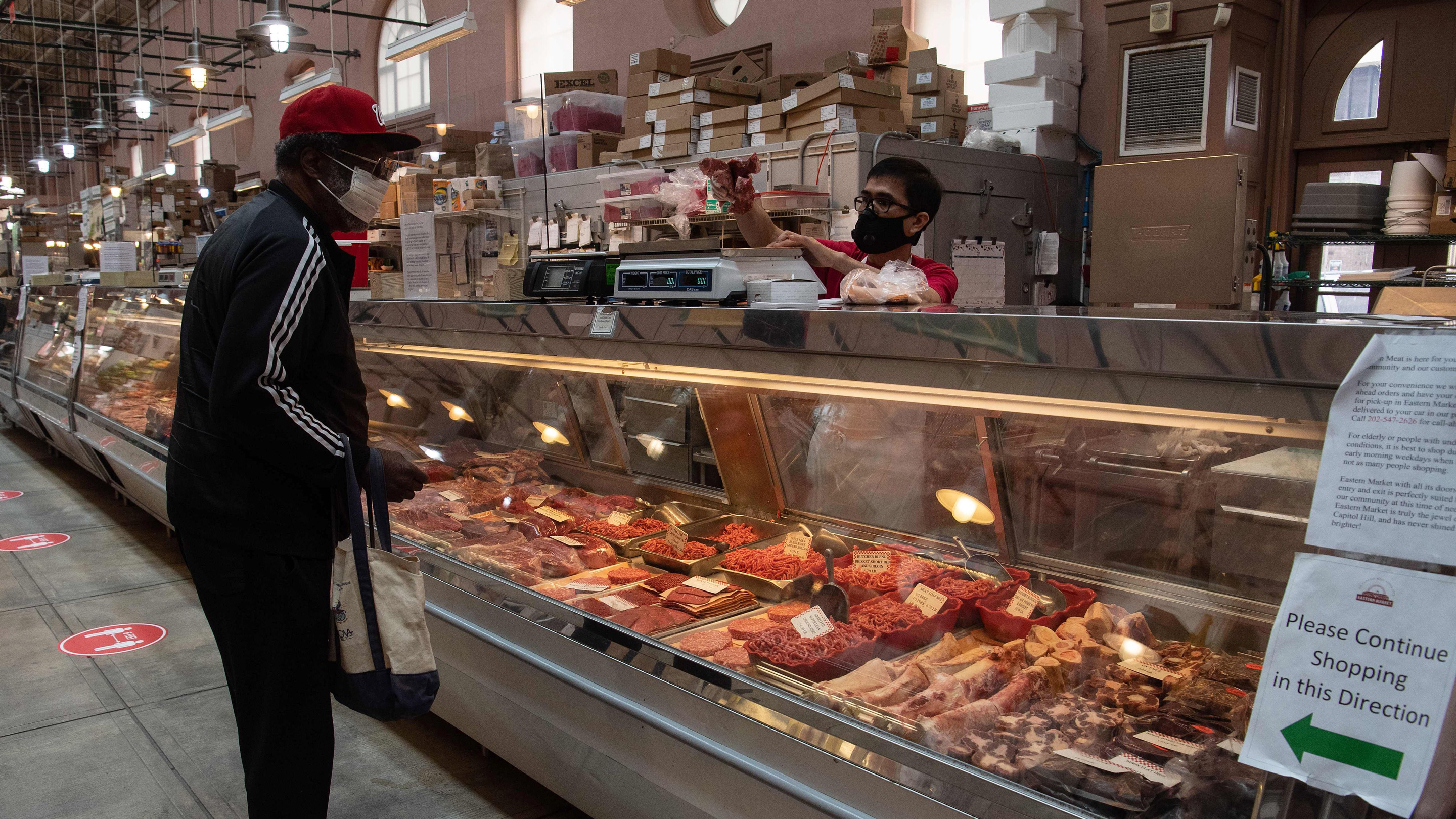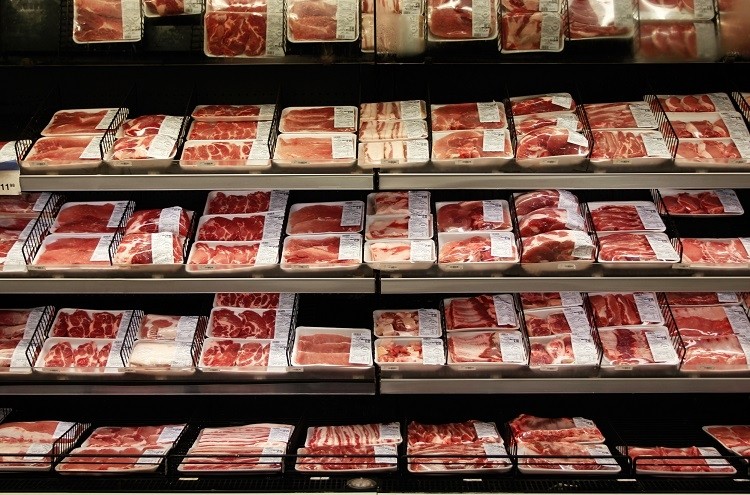Browse Through Bagley Farms Meat Market Edwardsville IL for Farm-Fresh Meat and Specialty Cuts
Browse Through Bagley Farms Meat Market Edwardsville IL for Farm-Fresh Meat and Specialty Cuts
Blog Article
Discover the Art of the Butcher's Cut in a Modern Meat Market
In the ever-evolving landscape of modern-day meat markets, the butcher's cut has transcended its traditional origins, combining age-old workmanship with modern practices. Today's butchers are not just cpus of meat; they are well-informed artisans who emphasize sustainability and honest sourcing. Their know-how in picking and preparing cuts tailored to certain culinary needs supplies an unparalleled dining experience. Yet, what genuinely establishes the modern butcher apart is their capability to forge a much deeper link in between consumers and the origins of their meat. Just how do these masters balance tradition with advancement, and what ramifications does this have for the future of meat consumption?
Development of Butchery Methods
The evolution of butchery techniques reflects an abundant tapestry of innovation and adjustment driven by advancements in modern technology, adjustments in customer demand, and a deeper understanding of meat scientific research. Historically, butchery was a craft passed down with generations, with approaches honed over centuries to maximize return and flavor. The industrial revolution ushered in automation, transforming standard practices and making it possible for massive processing.
The mid-20th century saw butchery techniques even more refined by clinical understandings into muscular tissue biology and meat aging, enhancing both inflammation and preference. Innovations like vacuum packaging and refrigeration extended item shelf-life, permitting butchers to expand offerings and improve quality assurance. This duration also marked the rise of specialized devices, such as band saws and meat slicers, which enhanced accuracy and efficiency in meat handling.

Digital systems currently aid in monitoring pet provenance and maximizing cuts to meet particular consumer preferences. In addition, a renewal in artisanal butchery has emerged, blending standard abilities with modern knowledge to provide to consumers seeking ethical and sustainable meat options.
Comprehending Meat Cuts
Comprehending the ins and outs of meat cuts is vital for both butchers and consumers seeking top quality and worth. For butchers, specific cuts mirror ability and respect for the craft, making sure marginal waste and ideal return.

Comprehending muscle make-up is important; muscles utilized more regularly by the animal have a tendency to be tougher and are best suited for slow food preparation approaches, while less-used muscles, like those located in the loin, are extra tender and suitable for barbecuing or roasting. Familiarity with these differences empowers consumers to make enlightened selections, enhancing their cooking ventures.
Picking Top Quality Meat
Selecting the right meat involves more than simply choosing a visually enticing item from the display. The art of selecting quality meat requires a discerning eye and understanding of certain qualities that signify quality and excellence.
Secondly, consider the marbling, which refers to the white streaks of fat within the muscular tissue. Correct marbling is a crucial indication of tenderness and taste, as it melts throughout food preparation, enhancing the meat's juiciness. Remember, higher marbling often associates with exceptional quality cuts, such as USDA Prime.
Structure is another important aspect; meat must feel solid to the touch, not slimed or overly soft. Furthermore, be mindful of the aroma. Fresh meat ought to have a tidy, neutral smell, devoid of any kind of sour or off-putting smells.
Pairing Cuts With Cooking Approaches

Conversely, harder cuts like brisket and chuck roast are rich in collagen, which breaks down into jelly when prepared slowly. These cuts are suitable for braising or slow-moving roasting, allowing the meat to tenderize in time and establish deep, intricate flavors. Similarly, cuts such as short ribs and pork shoulder make out well with blog slow-cooking techniques, where prolonged cooking times change their robust structures into delicious meals.
Lamb shanks and oxtail, which need long term food preparation to soften, are ideal candidates for stewing or slow simmering. These methods coax out rich, passionate flavors while keeping moisture. By comprehending the special features of each cut, cooks and home cooks alike can boost their culinary developments, ensuring each meal is both pleasing and unforgettable.
The Butcher's Role Today
Navigating the evolving landscape of the modern-day meat market, the butcher's function today extends beyond plain preparation of cuts. Contemporary butchers are cooking artisans, instructors, and advocates for sustainable practices. They connect the void in between the farm and the fork by guaranteeing moral sourcing, understanding pet husbandry, and focusing on openness in the supply chain. This change reflects the growing consumer demand for quality over amount, where provenance and animal well-being are paramount.
Along with crafting precise cuts, butchers now involve straight with customers, using cooking guidance and customizing choices to suit private requirements and preferences. Their experience in meat aging, marbling, and taste accounts empowers customers to content make informed choices, improving their cooking experiences. This tailored solution exhibits the butcher's progressing duty as a relied on expert in the kitchen.
Additionally, butchers are crucial in lessening waste, making use of entire animals to create varied products such as sausages and stocks. This detailed method not just respects the pet but additionally lines up with contemporary sustainability objectives. This way, the modern-day butcher symbolizes both custom and innovation, adjusting to an ever-changing market while maintaining the creativity and honesty of their craft.
Conclusion
The modern butcher's craft intricately weaves standard techniques with modern innovations, highlighting sustainable practices and moral sourcing. Proficiency in understanding varied meat cuts and quality signs encourages butchers to give informed suggestions, lining up particular cuts with optimal cooking approaches. This competence not just boosts culinary experiences but likewise strengthens the connection in between consumers and the origins of their food. By recognizing historical methods while welcoming modern needs, the butcher's duty stays crucial in today's advanced meat market (bagley farms meat market edwardsville il).
Report this page